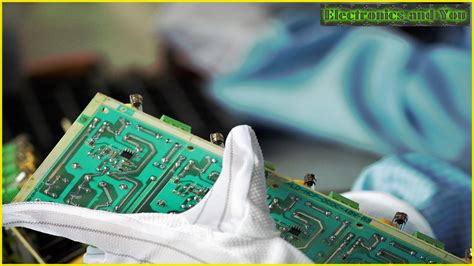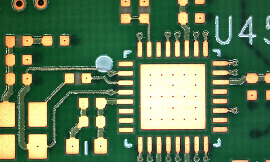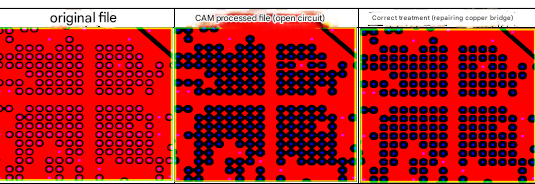Unlocking Innovation: The Future of Advanced PCB Assembly
Key Takeaways
In the realm of advanced PCB assembly, understanding the path taken to arrive at today’s techniques offers invaluable insights for future developments. The evolution of printed circuit board assembly (PCBA) has been marked by remarkable advancements aimed at enhancing efficiency and performance. These transitions not only incorporate state-of-the-art technologies but also reflect the growing demand across various industries for more sophisticated electronic solutions. One standout element is the rise of automation, which has revolutionized production lines, ensuring greater precision and reducing human error. As manufacturing scales, the need for speed without compromising quality becomes paramount, positioning automation as a key player in this sector.
Furthermore, emerging trends such as miniaturization and the incorporation of smart technologies are setting new benchmarks in how PCBA is approached. Industries like automotive and healthcare are particularly benefiting from these innovations, as they capitalize on advanced assembly techniques to create more compact and efficient devices that align with consumer expectations. However, alongside these opportunities lie challenges; manufacturers must navigate complex supply chains and enhance their processes continuously to stay relevant in a rapidly evolving landscape. By harnessing current technologies and exploring future innovations, industries can unlock unprecedented potential in electronic manufacturing, paving the way for a more connected, efficient world.
The Evolution of PCB Assembly: A Historical Perspective
The journey of pcb assembly has evolved significantly over the decades, driven by the need for increased efficiency and miniaturization in electronic devices. In the early days, PCBA techniques were rudimentary, relying heavily on manual labor for component placement and soldering. As technology progressed, the introduction of surface mount technology (SMT) marked a pivotal shift, allowing for denser and more reliable circuit designs. This innovation not only improved performance but also drastically reduced production times.
Throughout the 1980s and 1990s, enhancing the reliability and precision of pcb assembly became a priority. Advancements in computer-aided design (CAD) systems transformed how engineers approached circuit layouts. Moreover, these systems facilitated complex designs that were previously challenging to achieve. The integration of automated assembly techniques emerged as an essential component in this evolution, helping to minimize human errors and enhance production scalability.
Today, advanced PCB assembly is characterized by innovations such as robotics and artificial intelligence (AI), which are reshaping manufacturing processes. This shift not only streamlines assembly but also significantly impacts quality control measures. With automation increasingly at the forefront, industries can achieve higher throughput while maintaining stringent quality standards.
“As electronic devices continue to evolve, adapting our assembly techniques is crucial to remain competitive in a rapidly changing market.”
Key Trend Table: Evolution of PCB Assembly Techniques
| Year | Major Advancement | Impact |
|---|---|---|
| 1960s | Manual soldering | Labor-intensive with high error rates |
| 1980s | Introduction of SMT | Enabled denser designs |
| 1990s | Launch of CAD systems | Enhanced design accuracy |
| 2000s | Automation in assembly | Reduced human error and increased efficiency |
The early foundations of pcba have laid the groundwork for today’s sophisticated methodologies that promise to further expand possibilities in electronics manufacturing. This ongoing evolution emphasizes continuous improvement and adaptation to emerging technologies in a highly competitive landscape. The future holds exciting potential as new breakthroughs are anticipated to further enhance advanced PCB assembly capabilities across various industries.
Key Technologies Driving Advanced PCB Assembly
The evolution of PCB assembly techniques has been significantly influenced by the emergence of advanced technologies that enhance both precision and efficiency. One of the key technologies revolutionizing this field is Surface Mount Technology (SMT), which allows for the mounting of components directly onto the surface of printed circuit boards (PCBs). This method reduces space requirements while increasing component density, facilitating the development of smaller and more powerful electronic devices. Additionally, automated inspection systems, such as Automated Optical Inspection (AOI), play a crucial role in ensuring quality by detecting defects early in the pcba process. Innovations in soldering methods, including laser soldering and reflow soldering, have improved joint reliability and minimized thermal stress on components. Furthermore, advancements in materials science have led to the adoption of high-frequency materials and flexible substrates that can withstand harsh environments, thereby expanding application scopes across various industries. These technologies not only streamline the production process but also enable manufacturers to meet rising demands for more complex electronics, solidifying their position at the forefront of innovation in electronics manufacturing. With these advancements driving productivity and efficiency, the future of advanced PCB assembly promises to unlock new opportunities for growth within diverse sectors.
The Role of Automation in Enhancing PCB Manufacturing
The advancement of pcb assembly processes is significantly influenced by the integration of automation. Automation technologies are revolutionizing how pcba (Printed Circuit Board Assembly) is performed, leading to increased efficiency and reduced human error. Utilizing robotics and advanced machinery enables manufacturers to streamline their operations, ensuring consistent quality and quicker turnaround times. For instance, automated soldering techniques allow for precise application of solder, which minimizes defects and enhances the reliability of the final product. Moreover, automation facilitates real-time monitoring during the pcb assembly process, empowering manufacturers to identify and address potential issues instantaneously. As industries continue to pursue greater efficiency and productivity, the role of automation in enhancing pcb manufacturing cannot be overstated; it is pivotal in unlocking new capabilities and driving innovative solutions across various sectors. By harnessing these technologies, companies can not only improve their production rates but also respond better to market demands with increased flexibility.
Emerging Trends in Electronic Manufacturing: What to Watch For
The landscape of PCB assembly is rapidly evolving, bringing forth a wave of innovative techniques and technologies that are reshaping how electronic components are manufactured. Among the most significant trends is the incorporation of smart automation in PCBA processes. This advancement enhances efficiency and accuracy while reducing production costs. Additionally, the rise of flexible electronic designs is allowing manufacturers to create intricate and lightweight devices better suited for today’s fast-paced consumer demands. Furthermore, there’s a growing emphasis on sustainability, prompting manufacturers to adopt eco-friendly materials and practices that not only benefit the environment but also streamline production. The integration of Artificial Intelligence in quality control processes enhances defect detection rates, ensuring that the final products meet stringent industry standards. The shift towards more advanced and responsive production systems signifies a crucial transition in electronic manufacturing, providing companies with opportunities to unlock new potential in their offerings. It is vital for stakeholders to keep an eye on these trends as they will dictate the future direction of PCB assembly, profoundly impacting various sectors from consumer electronics to automotive industries.
Techniques for Optimizing PCB Assembly Processes
In the realm of pcb assembly, a variety of techniques have emerged to enhance efficiency and ensure high-quality production. One pivotal approach is the adoption of modular assembly, which allows for the simultaneous production of multiple units, drastically reducing turnaround times. Furthermore, the integration of advanced automation solutions is reshaping traditional methods, enabling precision in pcba processes and minimizing human error. Techniques such as automated optical inspection (AOI) and X-ray inspection are also crucial for maintaining quality assurance at various stages of assembly. These technologies facilitate early detection of defects, thereby conserving resources and time in the long run.
Additionally, implementing a well-structured layout optimization can significantly impact the overall performance of the pcb assembly process. Designers are increasingly utilizing software that analyzes electrical conductivity and thermal dissipation to enhance performance while reducing manufacturing complexities. By focusing on these innovative practices, industries can unlock efficiencies that translate into higher reliability and lower costs in their electronic products. Overall, as advanced techniques continue to evolve, they promise to reshape pcba methodologies significantly, leading to improved product outcomes across a wide spectrum of applications.
Industry Applications: How Advanced PCB Assembly is Transforming Sectors
The impact of advanced PCB assembly (PCBA) is palpable across a multitude of industries, serving as the backbone for technological evolution. In the consumer electronics sector, for instance, the miniaturization of components has driven the need for more sophisticated PCB assembly techniques. This has facilitated the production of lightweight devices that deliver enhanced performance without compromising functionality. Meanwhile, in the automotive industry, the integration of microcontrollers and sensors into vehicles—bolstered by innovative PCB designs—has enabled the emergence of advanced driver-assistance systems (ADAS), paving the way for safer and more autonomous driving experiences.
Furthermore, industries such as healthcare are leveraging advancements in PCB assembly to produce compact medical devices that reduce patient recovery times and improve diagnostics. From wearables monitoring vital signs to sophisticated imaging equipment, effective PCBA methods are significantly enhancing patient care quality. Meanwhile, in telecommunications, high-density interconnect (HDI) technology is optimizing wireless communication networks, allowing for faster data transfer rates and stronger connectivity.
Overall, embracing these innovations not only boosts operational efficiency but also opens new avenues for cross-industry collaboration, spurred by shared reliance on advanced PCB assembly techniques. Each sector’s ability to adapt and implement these technologies is vital in driving forward thinking and enhancing industrial capabilities on a global scale. The future looks promising as businesses exploit these trends to unlock greater potential in electronic manufacturing.
Challenges and Solutions in Advanced PCB Production
The realm of pcb assembly faces numerous challenges, primarily due to the increasing complexity of electronic devices and the need for higher performance. One of the most significant hurdles is ensuring consistent quality amidst tight production schedules. Inconsistent processes can lead to defects, but implementing robust quality control strategies and employing advanced pcba technologies can mitigate these risks. Additionally, the fast-paced evolution of materials and design requirements calls for continuous education and training for industry professionals. To tackle this, companies are investing in innovative training programs that focus on emerging technologies and techniques in advanced PCB assembly. Moreover, supply chain disruptions have posed a challenge to maintaining a steady flow of components, compelling manufacturers to adopt more flexible sourcing strategies and bolster relationships with suppliers. Leveraging data analytics can further enhance forecasting accuracy, helping companies adapt swiftly to market demands. By embracing these solutions, manufacturers can not only overcome existing challenges but also unlock new potential in the rapidly evolving landscape of electronic manufacturing.
Future Innovations: Predicting the Next Big Breakthroughs in PCB Assembly
As we look to the future of PCB assembly, several emerging technologies promise to reshape the landscape of PCBA. One of the most significant trends is the integration of AI-driven analytics and machine learning algorithms, which can enhance quality control and optimize manufacturing processes. These innovations not only reduce errors but also enable real-time monitoring of production lines, ensuring that any deviations are promptly addressed. Furthermore, flexible PCBs are gaining traction, allowing for more compact designs that can meet the demands of increasingly sophisticated electronics. The rise of 3D printing in PCB assembly is also noteworthy, enabling rapid prototyping and customization at unprecedented speeds. Moreover, with the focus on sustainability, advancements in eco-friendly materials and processes are likely to play a crucial role in addressing environmental concerns associated with electronic waste. As these technologies converge, they will unlock new avenues for efficiency and creativity in various sectors relying on PCBA, paving the way for innovative applications that we are only beginning to imagine.
Conclusion
In summary, advanced PCB assembly (often abbreviated as PCBA) is a transformative force across various industries, pushing the boundaries of what is possible in electronic manufacturing. As technology continues to evolve, the integration of innovative techniques and cutting-edge trends will unlock new potentials in product design and production efficiency. The role of automation in streamlining these processes cannot be overstated, significantly enhancing the accuracy and speed of manufacturing. However, alongside these advancements, industry players must navigate a range of challenges from supply chain logistics to quality control. By embracing these changes and focusing on continuous improvement, businesses can leverage advanced PCB assembly to stay competitive in an ever-evolving landscape. Ultimately, the future of PCBA looks promising as it paves the way for breakthroughs that will define the next generation of electronics.
FAQs
What is advanced PCB assembly?
Advanced PCB assembly (often abbreviated as PCBA) refers to the integration of complex techniques and technologies in the production of printed circuit boards. This includes highly intricate designs and smaller component placements that push the limits of traditional manufacturing methods.
How do automation technologies impact PCB assembly?
Automation significantly enhances PCBA processes by increasing production speed and reducing human error. Robotics and automated systems are used to streamline various stages, leading to more efficient workflows and higher quality outputs in electronic manufacturing.
What are some emerging trends in electronic manufacturing related to PCBA?
Some key emerging trends include the adoption of flexible PCBs, increased use of AI in defect detection, and advancements in 3D printing that allow for more innovative designs. These trends are shaping how industries approach PCB assembly, making processes more adaptable and efficient.
What industries benefit most from advanced PCB assembly?
Many industries benefit from advanced PCB assembly, including telecommunications, consumer electronics, automotive, and medical devices. Each sector leverages the innovative capabilities of PCBA to enhance functionality and performance.
For those interested in exploring more about this essential technology, please click here: Andwin PCB Assembly







